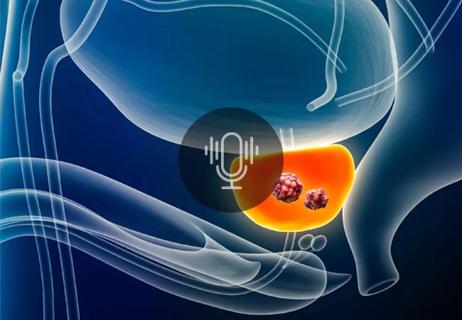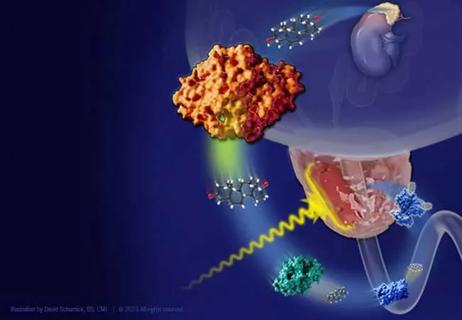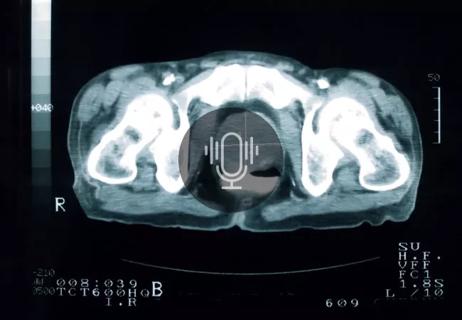AI histologic classifier reliably predicts clinical risk in men post-prostatectomy

An artificial intelligence (AI)-based histologic classifier can help risk-stratify men following radical prostatectomy to help determine next steps in their care. Cleveland Clinic researchers reported these findings at the 2025 Annual American Urological Association Meeting in Las Vegas.
Advertisement
Cleveland Clinic is a non-profit academic medical center. Advertising on our site helps support our mission. We do not endorse non-Cleveland Clinic products or services. Policy
The tool, known as the PathomIQ test, is an investigational AI-powered model trained to read whole slide image scans of biopsy or surgical pathology tissue. By detecting subtle differences in morphologic features, it predicts outcomes including biochemical recurrence-free survival (BRFS), progression and metastasis. It is in development for both prostate and breast cancer.
“Using computers to analyze the pathologic samples of prostate cancer tissue offers tremendous potential for personalization of cancer care. In our study, we found that the AI histologic classifier was independently predictive of cancer recurrence and metastasis. In the future, we hope to be able to better tailor treatment for our patients using these types of AI tools,” says Christopher Weight, MD, Director of Urologic Oncology at Cleveland Clinic’s Glickman Urological Institute.
This AI histologic classifier could potentially fill in a gap left by other current risk stratification modalities, including prostate-specific antigen (PSA) and the Gleason score. Those are helpful in determining which patients need initial surgery, but post-surgical management is a “gray area,” says study co-investigator Ross S. Liao, MD, a urology resident (PGY5).
“Once a man has had radical prostatectomy or radiation and his PSA was undetectable but then starts increasing slowly, what do we do? Do we need to treat it again right away, or can we wait? We don’t want to overtreat or under-treat him. This tool might be able to help us determine the best path forward,” Dr. Liao says.
Advertisement
The new study independently validated the AI histologic classifier as a reliable risk predictor in 344 men with clinically localized prostate cancer who had undergone radical prostatectomy with a genomic classifier at Cleveland Clinic between 2009 and 2022.
Over a median follow-up of 4.3 years, 21.8% of the patients overall (N=75) experienced biochemical recurrence. The five-year biochemical recurrence-free survival rate was 75% overall.
Scores of > 0.45 (high risk) and < 0.45 (low risk) were significantly associated with rates of BRFS (P < 0.001), as were Decipher scores of > 0.6 versus <0.6 (P = 0.0022). On multivariable analysis, the hazard ratio [HR] for prediction with high versus low-risk scores was 3.27 with the AI histologic classifier versus 2.04 for the genomic classifier. The AI histologic classifier scores also better predicted disease progression compared to that of the genomic classifier (HR 2.13 vs. 1.73).
Distant metastases occurred in 4.7%. Despite this low rate, a high AI histologic classifier score remained significantly associated with that outcome after adjustment (HR 10.10, P = 0.0284), while the genomic classifier score did not (HR 6.71, P = 0.0706).
Dr. Liao notes, “The genomic classifier is a well-established and widely used biomarker. I didn't expect the hazard ratios to be that much better with the AI histologic classifier tool.”
Dr. Weight adds that with the genomic classifier, there is some tissue destruction when obtaining the specimen, and it must be sent out for analysis. In contrast, the AI histologic classifier involves simply taking a photo and uploading it. This will likely enable much faster turnaround times, with results potentially available within one or two days versus four to six weeks.
Advertisement
Ultimately, Dr. Liao says, using the tool should help in counseling patients by allowing the doctor to tell them if they’re high or low risk. That, in turn, would enable a conversation about future care, such as additional radiation, hormone therapy, or just frequent surveillance.
Advertisement
Advertisement

Approach offers a ‘middle ground’ between radical prostatectomy and active surveillance

Historic collaboration connects two Cleveland Clinic locations, enables real-time sharing of metrics and surgical progress

Patient factors and cancer characteristics are key to deciding between focal therapies and whole gland treatment

Novel research to evaluate noninvasive treatments in ED and chronic pelvic pain

Correlation found between the biomarker HSD3B1 and resistance to combined hormone therapy and radiotherapy

FDA-approved therapy offers promise for patients with castrate-resistant prostate cancer

Using novel robotic approaches for a difficult-to-access prostate

A newer modality for select patients has shown positive outcomes to date